Sacred Heart Cathedral in Guangzhou isn’t just a church—it’s a reminder of the city’s layered past. Locals call it the "Stone House" for good reason: it’s one of the few Gothic-style cathedrals in all of China built entirely from granite. Standing tall since the 19th century, this twin-spired beauty draws in photographers, history lovers, and curious visitors alike. Whether you’re religious or not, you’ll feel the quiet power of its symmetry, stained-glass windows, and echoing stone halls. Nestled among old neighborhoods and just minutes from the Pearl River, it’s an easy stop if you’re exploring central Guangzhou. Free to enter on most days and open to foreign visitors, it’s worth carving out an hour or two here—especially if you’re keen to see a different side of the city, one shaped by global influence, local faith, and careful preservation.
What Is Sacred Heart Cathedral in Guangzhou and Why Is It Famous?
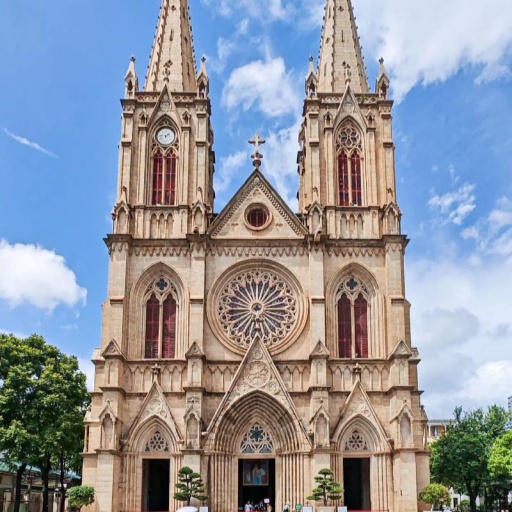
What Is Sacred Heart Cathedral in Guangzhou and Why Is It Famous?
Overview of the Cathedral’s History
Sacred Heart Cathedral in Guangzhou, also known locally as the “Stone House” (石室), dates back to 1863. French missionaries built the church during the Qing dynasty after the Second Opium War, when Western powers gained new religious freedoms in China. They chose this location near the Pearl River, close to what was then the foreign concession area. Construction took over 20 years, finally completing in 1888.
The cathedral has served as a major Catholic hub in South China ever since. Throughout the late 19th and early 20th centuries, it played a central role in spreading Catholicism in the region. Despite periods of closure during political unrest, Sacred Heart remained one of the few Catholic churches to survive relatively intact. Its longevity gives it great historical and religious weight in Guangzhou today.
Many locals call it the "Notre Dame of the East" because of its European origins and classic look. It has witnessed both colonial encounters and local adaptation of Christianity. The church still functions today, hosting regular Mass and events, especially on major Christian holidays like Easter and Christmas.
Unique Gothic Architecture in South China
What makes Sacred Heart Cathedral truly remarkable is its Gothic architecture—rare not just in China, but in all of Asia. The entire building is made of granite, from its soaring 28-meter-high twin towers to its pointed arches and vaulted ceilings. It's one of the few cathedrals in the world built entirely of stone, which gave rise to its nickname.
The cathedral’s front facade features a large rose window framed by intricate carvings. On sunny days, light pours through its stained-glass windows, casting colorful reflections inside. These windows depict scenes from the life of Jesus and other biblical figures, all made in France and shipped to China in the 19th century.
Inside, visitors are greeted by a long central nave with side chapels, confessionals, and traditional pews. The altar is modest yet elegant, and the tall ceilings echo with quiet reverence. For architecture lovers, this place is a must-see. It blends European church design with subtle Cantonese touches, like traditional Chinese symbols found on some columns and doors.
Importance in Local and Religious Culture
The cathedral isn't just a tourist site—it’s an active place of worship. Catholic locals attend Mass regularly, and many weddings and religious ceremonies happen here each month. On Sundays, services are held in Mandarin, Cantonese, and even English or Latin, making it a welcoming space for both locals and foreigners.
Its role extends beyond religion. For many in Guangzhou, Sacred Heart is a cultural symbol of the city’s openness to the West and its complex colonial past. It also stands as a peaceful sanctuary in the middle of the bustling Yuexiu district.
The site is managed by the Catholic Diocese of Guangzhou, which ensures the preservation of both the building and its religious practices. Whether you're religious or just curious about the city’s layered history, visiting Sacred Heart Cathedral offers a meaningful glimpse into Guangzhou's evolving identity.
How to Visit Sacred Heart Cathedral in Guangzhou?
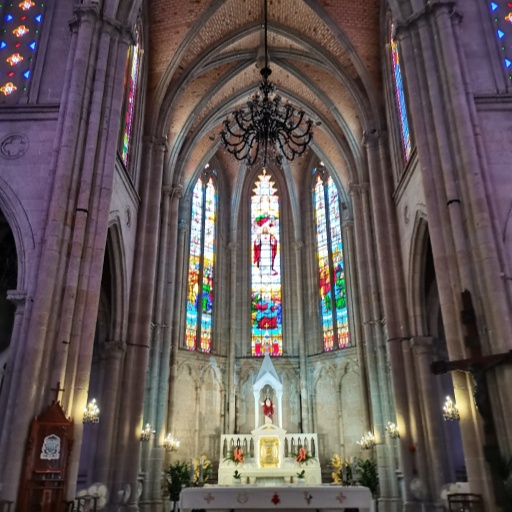
How to Visit Sacred Heart Cathedral in Guangzhou?
Opening Hours and Entry Fee
Visiting Sacred Heart Cathedral is generally straightforward, but a little planning goes a long way.
- Opening Hours: 8:00 A.M. – 5:30 P.M., every day
- Mass Time: 6:30 A.M., 7:00 A.M., on Monday-Saturday
7:00 P.M. on Saturday evening (in mandarin Chinese)
6:30 A.M., 8:30 A.M., 10:30 P.M., on Sunday (in English) - Address: Jiubuqian 56, Yide Lu, Yuexiu District, Guangzhou
- Tel: 83336737
- Admission: Free
Visitors traveling here can plan their itinerary wisely based on the information above.The above information comes from the official website of the Guangzhou Municipal Government. For more details, you can also visit the site.
How to Get There by Metro, Bus, or Taxi
Reaching Sacred Heart Cathedral is simple if you’re staying near central Guangzhou. The two closest metro stations are Yide Lu (Line 6) and Haizhu Square (Line 2 & 6). From either station, it’s about a 10-minute walk through local markets and old Cantonese streets.
If you're new to Guangzhou, we recommend using Gaode Map (Amap) or Baidu Maps, both of which now offer English-language interfaces. Just type "Sacred Heart Cathedral" and follow the directions.
By taxi or ride-hailing apps like Didi, the drop-off point is on Yide Road or Tiyu East Road. Fares from downtown usually range between ¥20–30 depending on traffic. While public buses are an option, routes can be hard to follow for non-Chinese speakers. The metro is your most foreigner-friendly option.
Best Time of Day to Visit
The best time to visit Sacred Heart Cathedral is in the early morning, especially on weekdays. Morning sunlight filters through the stained glass, casting colorful shadows inside the nave—perfect for photos. It’s also when the area is most peaceful, and the staff are more likely to be available for questions.
If you go in the afternoon, aim to arrive before 4:30 PM. After that, the sun begins to set, and the lighting dims inside. Saturdays and Sundays tend to be busier due to services and tourists. If you prefer a quieter visit, avoid weekends or go between Tuesday and Thursday.
Guangzhou’s weather can also affect your experience. On rainy days, the cathedral’s courtyard may be slippery, so wear shoes with grip. In the summer, it gets humid, and indoor airflow is limited—bringing a hand fan helps. Winter visits are more comfortable and offer clearer air quality.
What Can You See and Do at the Cathedral?
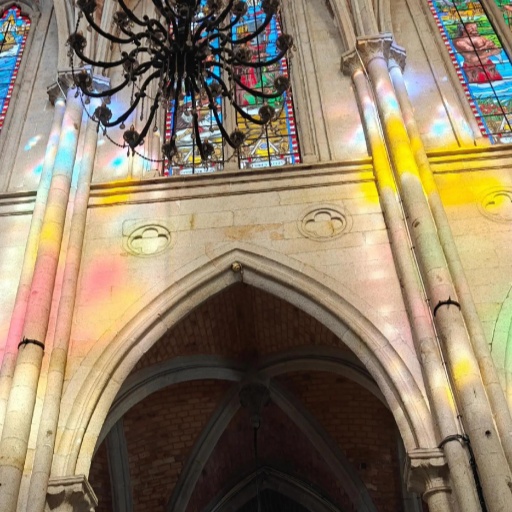
What Can You See and Do at the Cathedral?
Interior Highlights and Photography Tips
Step inside Sacred Heart Cathedral and you’ll instantly feel the shift in atmosphere. The vaulted ceilings stretch high above, supported by soaring stone pillars that give the space a sense of calm and grandeur. The twin towers, visible from outside, frame the interior nave in perfect symmetry. Look up, and you’ll see delicate ribbed arches that lead your eyes straight toward the ornate altar, a centerpiece adorned with religious statues and detailed carvings.
Photography is allowed in most parts of the cathedral, but discretion is key. Avoid flash photography, especially during Mass or prayer sessions. For the best lighting, stand near the entrance in the morning—natural light pours through the rose windows and illuminates the stone walls with colorful patterns. If you’re using a phone, try portrait mode for soft, detailed shots.
As you walk through the pews, keep your voice down and respect others who may be praying. This is not just a tourist site—it’s an active place of worship. The atmosphere is serene, and many visitors stay longer than planned, drawn in by the building’s quiet beauty.
Join a Local Mass (If Open to Public)
Attending a Mass at Sacred Heart Cathedral offers a deeper look into its role in the community. Services are held throughout the week, but Sunday mornings are the most accessible for travelers. Some Masses are conducted in English or Latin, especially those aimed at the international community. If you’re interested, check the official WeChat account or bulletin board outside the cathedral for updated schedules.
You don’t need to be Catholic to attend. Many curious visitors join respectfully, standing or sitting quietly at the back. It’s a great opportunity to experience the building in action—watching the community come together in ritual, song, and reflection. Dress modestly, silence your phone, and don’t take photos during the service.
If you’re lucky, you might catch a special event such as Easter Mass or Christmas Eve, both of which draw large crowds and feature live choir music. Just remember to arrive early, as seating fills up quickly.
Learn from Onsite Volunteers or Printed Guides
While Sacred Heart Cathedral doesn’t have a full-time museum setup, there are usually volunteers near the entrance during open hours. Some speak basic English and can answer common questions about the cathedral’s history and design. If you want a more structured visit, join a local walking tour—many Guangzhou heritage tours include this cathedral as a highlight, often with background stories you won’t find on a signboard.
Look for printed brochures at the main gate or donation desk. These are often bilingual and explain the meaning behind the architecture, stained-glass panels, and statues. Some QR codes placed around the site link to mini-guides in English or Chinese.
For those deeply interested in architecture or history, the Guangzhou Catholic Diocese website occasionally posts feature articles and historical records (although mostly in Chinese). Still, even without a guide, just walking through the space—with a little patience—can be just as rewarding.
What Attractions Are Near Sacred Heart Cathedral in Guangzhou?
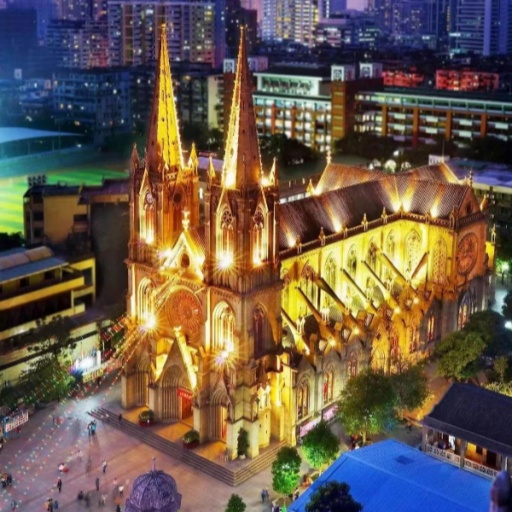
What Attractions Are Near Sacred Heart Cathedral in Guangzhou?
Shamian Island and Riverside Walks
Just a 15-minute walk from Sacred Heart Cathedral lies Shamian Island — a calm, leafy neighborhood that feels like it belongs to another era. Once a foreign concession, this island is filled with restored European-style buildings, tree-lined boulevards, and peaceful parks. Many embassies used to be here, and now you'll find boutique hotels, small museums, and cozy cafés housed in old mansions.
The riverside walk along the Pearl River offers a relaxing break from the downtown buzz. You can sit by the water, watch locals practicing tai chi, or catch a street musician playing traditional instruments. In the late afternoon, the lighting is perfect for photos. Couples often come here for wedding shoots, and travelers love the island’s photogenic charm.
If you’re into architecture, don’t miss the White Swan Hotel, one of China’s first international five-star hotels. Even if you're not staying there, the lobby and riverside views are worth a peek. Overall, Shamian is a great spot to unwind before or after your cathedral visit.
Qingping Market and Local Cantonese Streets
A few blocks north of the cathedral, you’ll run into Qingping Market—a fascinating maze of shops selling everything from traditional Chinese herbs to dried seafood. It’s not polished or touristy, and that’s what makes it fun. This is the real Guangzhou: loud, busy, slightly chaotic, and deeply flavorful.
You’ll see vendors offering ginseng, deer antler, dried mushrooms, and medicinal teas. Many stalls have labels in Chinese only, so it helps to have a translation app handy. Even if you don’t buy anything, browsing the market is a cultural deep dive. Just be ready for some strong smells—it’s part of the charm.
Nearby side streets are lined with old Cantonese-style shophouses and snack stalls. Try some herbal jelly, local sausages, or freshly steamed dumplings. This area hasn’t been fully modernized, so it retains that raw, lived-in feel that’s getting harder to find in big cities.
Local Cafes and Souvenir Shops Nearby
After your walk and market stop, you might want to sit down somewhere cool. Luckily, the area around Sacred Heart Cathedral has some charming local cafés, many tucked inside refurbished heritage buildings. These places serve everything from hand-drip coffee to lychee smoothies, and they often have quiet patios or rooftop spots.
One favorite among travelers is The Coffee Commune, just a 5-minute walk from the cathedral. It’s foreigner-friendly, with an English menu and fast Wi-Fi. Another good option is Le Lézard Bleu, a French-inspired café with Cantonese twists. Great place to chill, read a guidebook, or write postcards.
For souvenirs, skip the generic stalls and check out small design shops around Haizhu Square. Look for handmade ceramics, embroidered fans, or mini calligraphy scrolls. Prices range from ¥20 to ¥200, and many shops accept WeChat Pay or Alipay. Just make sure the shop allows foreign card-linked accounts.
Travel Tips for Foreign Visitors
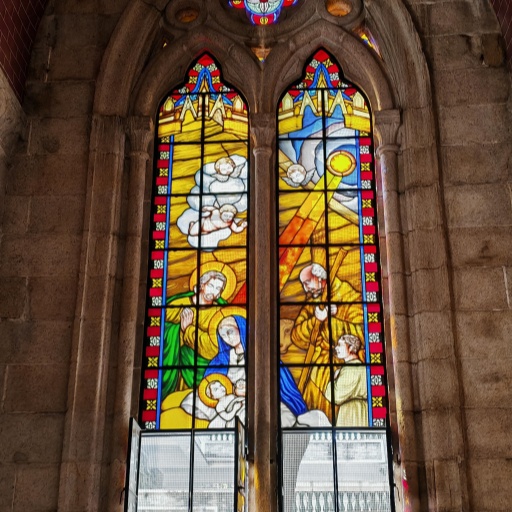
Travel Tips for Foreign Visitors
Language and Etiquette at a Religious Site
Visiting Sacred Heart Cathedral means stepping into a sacred space. Even if you're not religious, it’s important to be respectful. Dress modestly—no sleeveless tops or short shorts. Try to keep your voice low. When a service is going on, avoid walking around too much or taking photos.
Most signs are in Chinese, but a few have English translations. If you're unsure, follow the locals' lead. During mass, it’s polite to sit or stand when others do. You don’t have to join the prayers, but remaining quiet is appreciated. Phones should be on silent or switched off completely.
If you need help, don’t hesitate to approach a volunteer or staff member. While they may not all speak fluent English, they’re generally friendly. A simple translation app goes a long way. Just showing a screen with “Where is the entrance?” or “Can I take photos?” will usually get your message across.
Is Photography Allowed?
One of the top questions travelers ask is whether photography is okay inside the cathedral. The answer: it depends. You're free to take photos outside—many people love snapping shots of the cathedral's gothic twin towers and rose windows. The lighting in the early morning or late afternoon is especially good.
Inside, it gets more sensitive. In general, quiet photography without flash is tolerated when no services are happening. However, during mass or religious ceremonies, it’s best to avoid taking any pictures. Some staff may ask you to put your camera away even when no mass is in progress.
Always check for signs near the entrance or ask a volunteer. If you want to take photos inside, try going during the weekday, when fewer people are present. Better yet, step outside after your visit and photograph the cathedral’s detailed exterior—it’s equally beautiful and less intrusive.
Accessibility and Safety Notes
Sacred Heart Cathedral is mostly accessible, but not perfectly so. The front steps can be tricky for wheelchair users, though staff can help guide you to side entrances. There are no elevators inside, and some areas (like upper levels) are off-limits.
Public restrooms are available just outside the cathedral gate, though they may not meet Western standards. Bring tissues and hand sanitizer, just in case. Also, avoid large crowds, especially on holidays or Sundays when church services draw more visitors.
Security is usually light, but stay aware of your belongings. Like many public spaces in Guangzhou, petty theft isn’t common, but being cautious never hurts. It’s also a good idea to bring a copy of your passport, in case you’re asked for ID. Lastly, check the weather forecast before your visit—afternoons in Guangzhou can be hot and humid, so water and sunscreen are smart to have on hand.
Frequently Asked Questions (FAQs)
Q: Can foreigners attend Mass at Sacred Heart Cathedral in Guangzhou?
A: Yes, Sacred Heart Cathedral in Guangzhou is open to foreigners for Mass. The Sunday English Mass at 10:30 AM is especially welcoming to international visitors. Many expats and tourists attend regularly. The cathedral provides hymn sheets and readings in English. If you're Catholic or simply curious, you’ll feel comfortable joining. Arrive a bit early to find a seat and soak in the peaceful atmosphere. The staff are friendly and used to welcoming foreign guests. Just be respectful: wear modest clothing and silence your phone. Sacred Heart Cathedral in Guangzhou values its role as a spiritual home for both locals and visitors. So even if you're not religious, it's a meaningful cultural experience.
Q: Is there a dress code for Sacred Heart Cathedral in Guangzhou?
A: While Sacred Heart Cathedral in Guangzhou doesn’t enforce a strict dress code, modesty is expected. As with most religious sites, it’s polite to wear tops with sleeves and knee-length bottoms. Avoid flashy outfits, loud colors, or beachwear. This applies especially if you’re visiting during Mass times. Some areas within Sacred Heart Cathedral in Guangzhou are reserved for prayer, so it’s best to show respect through appropriate clothing. Visitors should also remove hats inside the chapel. Locals appreciate when tourists observe these unspoken rules. Dressing modestly helps you blend in and keeps the visit respectful for everyone.
Q: Are guided tours available at Sacred Heart Cathedral in Guangzhou?
A: Official guided tours aren't always available at Sacred Heart Cathedral in Guangzhou, but you have options. On weekends, local volunteers sometimes provide short introductions in English or Mandarin. These are free but not guaranteed. For a deeper understanding, many tourists book city walking tours that include Sacred Heart Cathedral in Guangzhou as a stop. These can be arranged through platforms like GetYourGuide or Klook. If you're on your own, the cathedral sometimes offers printed brochures near the entrance. Or, simply wander and take it all in—the stained glass, twin spires, and carved stone all speak for themselves.
Q: Can I take photos inside Sacred Heart Cathedral in Guangzhou?
A: Yes and no. You can take photos outside Sacred Heart Cathedral in Guangzhou freely—it’s one of the most photogenic Gothic landmarks in China. But inside, photography is more restricted. During Mass or private ceremonies, cameras and phones should stay off. Flash photography is never allowed. If you visit during quiet hours, you might be able to snap a few respectful shots, especially of stained glass or arches. But always check with a staff member or sign first. Sacred Heart Cathedral in Guangzhou is a working place of worship, not just a tourist spot, so it’s best to ask before shooting.
Q: Is Sacred Heart Cathedral in Guangzhou wheelchair accessible?
A: Sacred Heart Cathedral in Guangzhou has limited wheelchair accessibility. The main courtyard and entrance are relatively flat, and the side gates are wide enough for most wheelchairs. However, the interior flooring is uneven in parts, and there are small steps leading to some chapel sections. There are no elevators. If you or a companion has mobility needs, it’s best to come with assistance. Volunteers may help if asked politely. Sacred Heart Cathedral in Guangzhou is historic, and while not fully barrier-free, most visitors can still enjoy its grandeur from the main hall and garden areas.
Q: How long should I plan to spend at Sacred Heart Cathedral in Guangzhou?
A: Most visitors spend about 30 to 60 minutes at Sacred Heart Cathedral in Guangzhou. If you're just stopping by for a quick look and a few photos, 30 minutes is enough. But if you’re interested in the architecture or planning to attend Mass, give yourself an hour. There’s no rush—many people just sit quietly and take in the atmosphere. Sacred Heart Cathedral in Guangzhou isn't large, but the details are rich: the stained glass, the twin spires, the stone carvings. If you visit on a weekend, you might catch a choir rehearsal or volunteer-led explanation. It’s also worth exploring nearby Yide Lu after your visit for snacks or souvenirs. Just pace it right—Sacred Heart Cathedral in Guangzhou feels best when you’re not checking the time.
Q: What is the best way to photograph Sacred Heart Cathedral in Guangzhou?
A: For stunning photos of Sacred Heart Cathedral in Guangzhou, try visiting in the morning. That’s when the sun lights up the twin towers from the east side, and the crowd is smaller. You’ll get a clean shot of the facade, complete with the rose window and iron gates. For interior photos, check that no Mass is in progress—respect comes first. Use a wide-angle lens to capture the high arches and stained glass. Photography is allowed outside freely, but keep flash off inside. Locals love taking wedding shots near Sacred Heart Cathedral in Guangzhou, so you might even catch a couple posing in front of the doors. Bonus tip: cross the street to the small square facing the entrance. That’s the best angle for symmetry.
Q: Can I attend an English-language service at Sacred Heart Cathedral in Guangzhou?
A: Yes, Sacred Heart Cathedral in Guangzhou offers English-language Mass every Sunday at 10:30 AM. It’s popular among foreign residents, tourists, and students. The service is held in the main sanctuary and follows a traditional Catholic structure. Hymnals and prayer sheets in English are usually available near the entrance. Arrive early to find a seat—this time slot often gets full. The Mass is calm, welcoming, and respectful. Sacred Heart Cathedral in Guangzhou encourages international visitors to join as long as they follow etiquette: modest dress, no phone use, and quiet attention. Even if you’re not Catholic, you’re welcome to observe quietly from the back. It’s one of the few places in Guangzhou where English-speaking worship is available weekly.
Q: Is Sacred Heart Cathedral in Guangzhou open during major holidays?
A: Yes, Sacred Heart Cathedral in Guangzhou is open during most major holidays, especially Catholic ones like Christmas and Easter. In fact, these are some of the most beautiful and meaningful times to visit. The church gets fully decorated, and special Masses attract both locals and foreigners. But prepare for crowds—arrive early if you want a seat. During Chinese national holidays, Sacred Heart Cathedral in Guangzhou may adjust opening hours, but it usually remains accessible for visitors. If you’re unsure, check the church’s bulletin board or ask a volunteer at the gate. Unlike some other tourist sites, the cathedral keeps its doors open for reflection, even on festive days.
Want more China travel ideas? Check out our city guides on Beijing, Shanghai, Guangzhou, and Chengdu.


